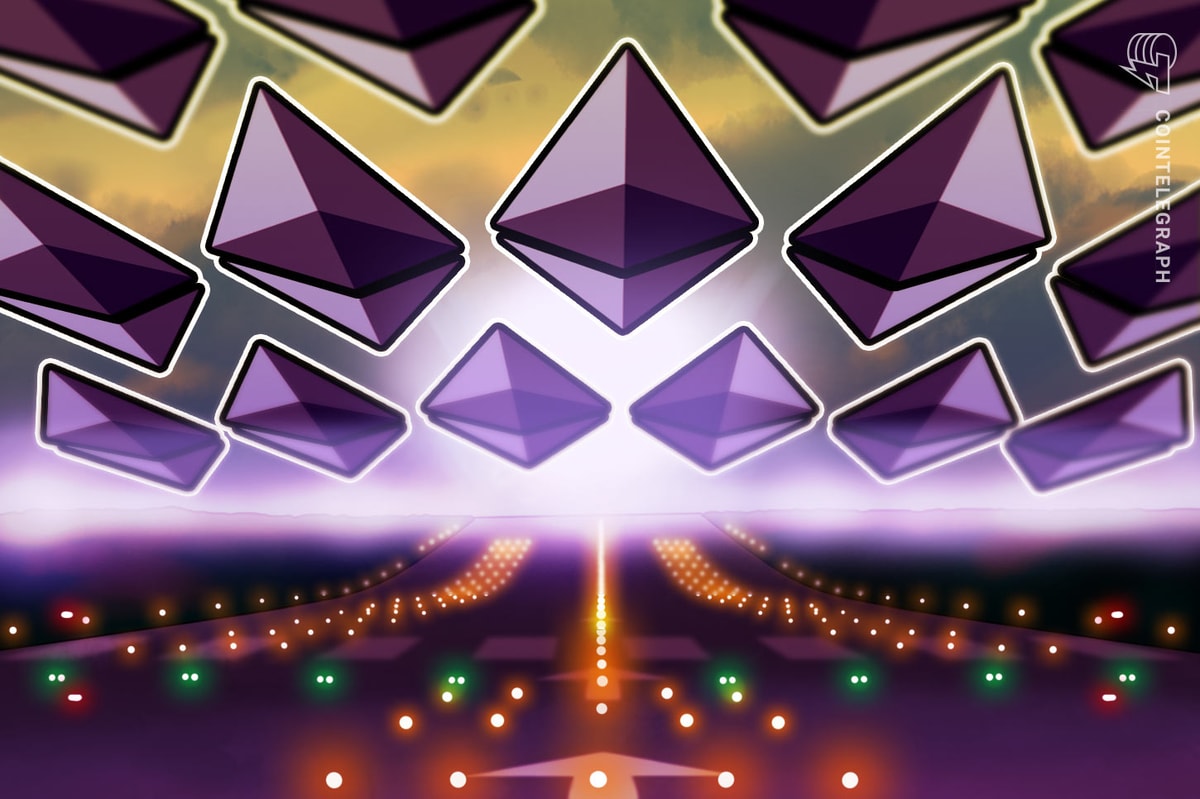August 13, 2025
5 min read
Vince Quill
The Ethereum transaction count is rising amid Ether’s push toward the $5,000 milestone. However, increased competition is eating into network revenue and user mindshare.
Ethereum’s daily average transaction count is hovering near all-time highs, with over 1.7 million transactions recorded on Tuesday, according to Nansen.
For comparison, Ethereum layer-2 networks, Arbitrum and Base, recorded over 3.4 million and 8.6 million transactions respectively, while Aptos, a competing layer-1 blockchain, hosted 3.8 million transactions on Monday, according to The Tie.
Active addresses on Ethereum have remained fairly flat, fluctuating between 400,000 and 600,000 since 2018, with occasional spikes above 1 million.
The data indicates much of Ethereum’s traffic is migrating to other blockchain networks, eroding its market share and protocol revenues, and forcing stakeholders to reconsider strategies for the smart contract network.
Misaligned Incentives and Next-Generation Blockchains Erode Ethereum’s Market Share
Ethereum, the world’s first smart contract blockchain, once the undisputed leader in general-purpose smart contract platforms, now faces growing competition both from within its ecosystem and from external players. Network fees on Ethereum’s base layer have plummeted since 2022, partly due to the Dencun upgrade, which went live in March 2024. This upgrade significantly reduced fees on Ethereum layer-2 networks, incentivizing users to switch to these cheaper solutions to avoid high transaction costs, which could reach $50 during congestion. High-throughput layer-1 networks like Solana and Sui are also competing for user attention and market share, prompting the Ethereum Foundation to adapt and reconsider its scaling and execution roadmap. However, Polygon Labs CEO Marc Boiron recently cautioned that attempting to compete directly with newer layer-1 networks on throughput might be “dangerous” for Ethereum. Ethereum’s evolving landscape highlights the challenges of balancing scalability, user adoption, and revenue generation amid a rapidly changing blockchain ecosystem.Frequently Asked Questions (FAQ)
Understanding Ethereum's Network Dynamics
Q: What is the current trend in Ethereum's transaction count? A: Ethereum's daily average transaction count is currently near all-time highs, with over 1.7 million transactions recorded on a recent Tuesday. Q: How does Ethereum's transaction volume compare to its Layer-2 solutions and competitors? A: Ethereum's Layer-2 networks like Arbitrum and Base, and competing Layer-1 blockchains like Aptos, are handling significantly higher transaction volumes. Arbitrum recorded over 3.4 million, Base over 8.6 million, and Aptos hosted 3.8 million transactions on a recent Monday. Q: What has happened to active addresses on the Ethereum network? A: Active addresses on Ethereum have remained relatively flat, fluctuating between 400,000 and 600,000 since 2018, despite occasional spikes. Q: Where is Ethereum's network traffic migrating to? A: Data suggests that a significant portion of Ethereum's traffic is moving to other blockchain networks. Q: What impact is this migration having on Ethereum's market share and revenue? A: This migration is eroding Ethereum's market share and protocol revenues, prompting stakeholders to reassess their strategies.Ethereum's Competitive Landscape and Fee Structure
Q: What factors are contributing to the erosion of Ethereum's market share? A: Misaligned incentives and competition from next-generation blockchains are eroding Ethereum's market share. Q: Why have network fees on Ethereum's base layer decreased? A: Network fees have plummeted since 2022, partly due to the Dencun upgrade in March 2024, which significantly reduced fees on Layer-2 networks. Q: How did the Dencun upgrade affect Ethereum's fee structure? A: The Dencun upgrade significantly lowered fees on Ethereum Layer-2 networks, making them more attractive for users looking to avoid high transaction costs on the base layer, which previously could reach $50 during congestion. Q: Who are some of the key competitors challenging Ethereum? A: High-throughput Layer-1 networks like Solana and Sui are also competing for user attention and market share. Q: What is the perspective of Polygon Labs CEO on competing with newer Layer-1 networks? A: Polygon Labs CEO Marc Boiron has cautioned that directly competing with newer Layer-1 networks on throughput might be "dangerous" for Ethereum. Q: What fundamental challenges does Ethereum face in its current ecosystem? A: Ethereum faces the challenge of balancing scalability, user adoption, and revenue generation within a rapidly evolving blockchain ecosystem.Crypto Market AI's Take
The evolving landscape of Ethereum, with its increasing transaction counts being offset by competitive pressures and fee reductions, highlights a critical phase for the network. As users and developers gravitate towards more cost-effective and higher-throughput solutions, Ethereum's original value proposition is being re-evaluated. This dynamic underscores the ongoing innovation in the blockchain space, where scalability and user experience are paramount. At Crypto Market AI, we leverage advanced AI trading bots to navigate these complex market shifts, providing data-driven insights and automated strategies to capitalize on emerging trends. Understanding these network dynamics is crucial for informed decision-making in the digital asset space, especially as we explore the potential of AI-driven market analysis.More to Read:
- Why Ethereum is Outperforming Bitcoin
- Top 3 AI Crypto Buys Before Next Bull Run
- Understanding Cryptocurrency Ledgers: The Backbone of Blockchain

